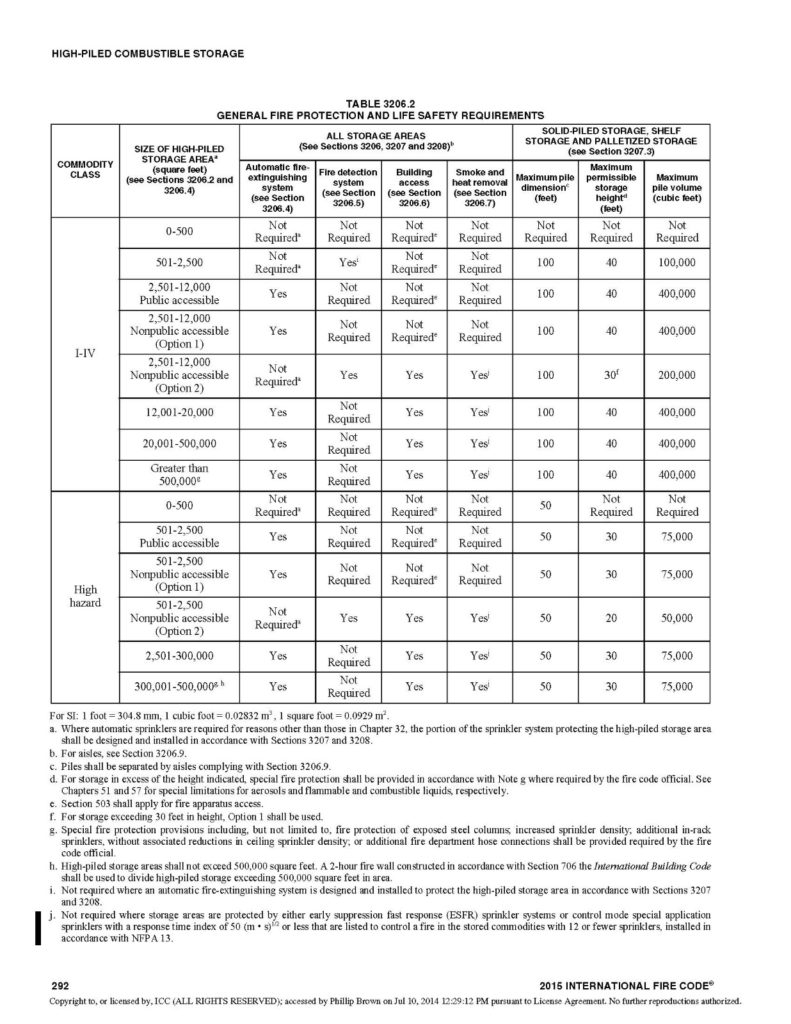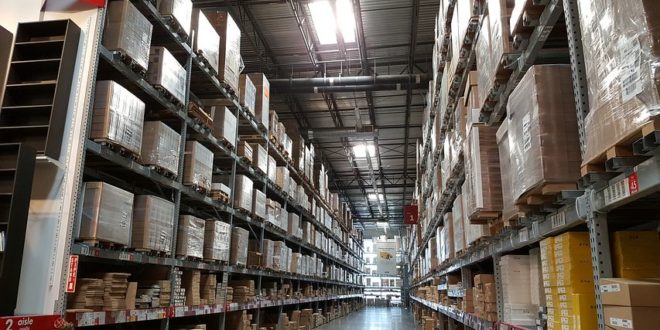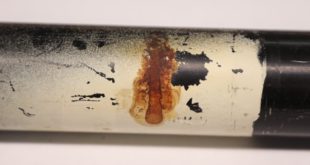Issues Concerning Smoke and Heat Vents
When protecting storage occupancies there are several issues that can impact the selected protection methods. This article will discuss conditions where smoke and heat vents or mechanical smoke removal systems could potentially be installed along with sprinklers and the issues that might arise.
The International Building Code (IBC), 2015 edition in Section 413.1 requires all high-pile or rack storage in any occupancy to comply with the requirements in the International Fire Code (IFC), which are located in Chapter 32, High-Piled Combustible Storage. The first time the IFC references the interaction between smoke and heat vents or a mechanical smoke removal systems and sprinklers is in Section 3206.2, which states:
“Where required by Table 3206.2, fire detection systems, smoke and heat removal, and automatic sprinkler design densities shall extend the lesser of 15 ft (4572 mm) beyond the high-piled storage area or to a permanent partition. Where portions of high-piled storage areas have different fire protection requirements because of commodity, method of storage or storage height, the fire protection features required by Table 3206.2 within this area shall be based on the most restrictive design requirements.”

Table 3206.2. Excerpted from the 2015 International Fire Code; Copyright 2014. Washington, D.C.: International Code Council. Reproduced with permission. All rights reserved. www.ICCSAFE.org
The reference to requiring the automatic sprinkler design density extending to either 15 ft beyond the high-pile storage area or to a permanent partition is the same requirement in Section 12.3 of the 2016 edition of NFPA 13, which states:
“For buildings with two or more adjacent hazards or design methods, the following shall apply:
“(1) Where areas are not physically separated by a barrier or partition capable of delaying heat from a fire in one area from fusing sprinklers in the adjacent area, the required sprinkler protection for the more demanding design basis shall extend 15 ft (4.6 m) beyond its perimeter.
“(2) The requirements of 12.3(1) shall not apply where the areas are separated by a draft curtain or barrier located above an aisle, horizontally a minimum of 2 ft (600 mm) from the adjacent hazard on each side, or a partition that is capable of delaying heat from a fire in one area from fusing sprinklers in the adjacent area.”
This also repeated in Section 11.1.2 of NFPA 13.
From here, Table 3206.2, General Fire Protection and Life Safety Requirements from the IFC can be reviewed to determine whether an automatic fire-extinguishing system, fire detection system, and/or smoke and heat removal is required. (See Figure 1 on page 27.) The commodity classification and size of the high-pile storage area being protected will determine what protection methods are required. What is commonly overlooked when reviewing the requirements of this table are Notes i and j. Note i states:
“Not required where an automatic fire-extinguishing system is designed and installed to protect the high-piled storage area in accordance with Sections 3207 and 3208.”
Note i is used in reference to the requirement of fire detection for Class I-IV commodities when the storage area is 501-2,000 ft2 with public access. This is allowed because an automatic fire-extinguishing system is not required for this storage method, so the automatic fire-extinguishing system would be acting as the fire-detection system. This same reasoning is stated in Section 907.4.3.1 of the IFC but it is referring to a different issue. Then, Note j states:
“Not required where storage areas are protected by either early suppression fast response (ESFR) sprinkler systems or control mode special application sprinklers with a response time index of 50 (m • s)1/2 or less that are listed to control a fire in the stored commodities with 12 or fewer sprinklers, installed in accordance with NFPA 13.”
Note j is used in reference to the requirement of smoke and heat removal systems for Class I-IV commodities when the storage area exceeds 12,000 ft2 and 2,501-12,000 ft2 without public access and high-hazard commodities when the storage area exceeds 500 ft2. This is also stated in Section 910.2 Exceptions 2 and 3. This allowance is also extended to Group S-1 occupancies with an area exceeding 50,000 ft2 of undivided space. The purpose of being able to omit smoke and heat removal systems is because of the effect they could have on ESFR sprinklers and CMSA sprinklers with an RTI of 50 (m•s) 1/2 or less that are listed to control a fire in stored commodities with 12 or fewer sprinklers. ESFR and CMSA sprinklers need to collect all the heat they can to activate the appropriate amount sprinklers; thus, if the smoke and heat removal system were activated it could actually have a detrimental effect on the sprinkler system.
If a smoke and heat removal system is installed along with a sprinkler system, the automatic roof vents are required to have an operating element with a temperature classification higher than the sprinklers per NFPA 13, Standard for the Installation of Sprinkler Systems, Section 12.1.1.1. This is in hopes to minimize the potential effect the smoke and heat removal system can have on sprinkler activation. Section 12.1.1.2 of NFPA 13 goes further for automatic heat or smoke vents used with ESFR sprinklers by requiring automatic heat or smoke vents to use a high-temperature rated, standard-response operating mechanism.
These are some of the potential issues that could arise while designing sprinkler systems for storage occupancies. A lot of the times the project architect and/or mechanical engineer does not know of the issues between smoke and heat removal systems and sprinkler systems, as well as the allowance to

ABOUT THE AUTHOR: Russ Bainbridge, PE, CFPS, MS, is senior fire protection engineer for the American Fire Sprinkler Association (AFSA). He has a bachelor’s degree in fire protection and safety technology with a minor in emergency management from Oklahoma State University and a master’s degree in fire protection engineering from California Polytechnic State University. Bainbridge has a Professional Engineer license in Fire Protection Engineering in the state of California. He is a member of NFPA’s Certified Fire Protection Specialist (CFPS) Certificate Advisory Group, sits on the Society of Fire Protection Engineers’ (SFPE) Professional Competency & Credentialing and Nominating Committees.
IMPORTANT NOTICE: The article and its content is not a Formal Interpretation issued pursuant to NFPA Regulations. Any opinion expressed is the personal opinion of the author and presenter and does not necessarily present the official position of the NFPA and its Technical Committee.
 Sprinkler Age A Publication of the American Fire Sprinkler Association
Sprinkler Age A Publication of the American Fire Sprinkler Association

